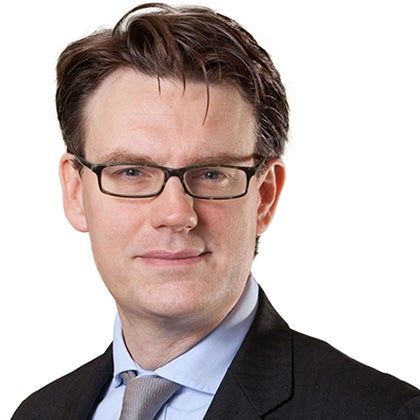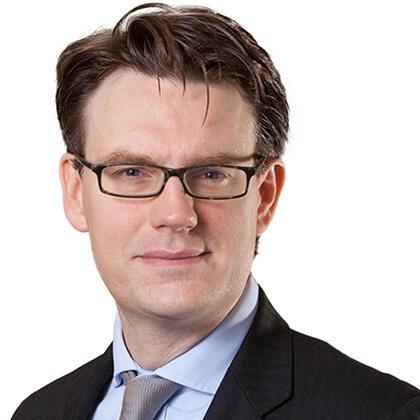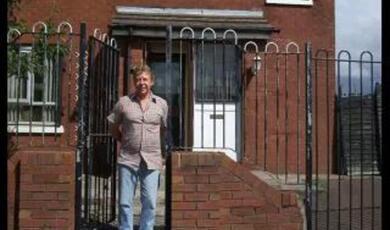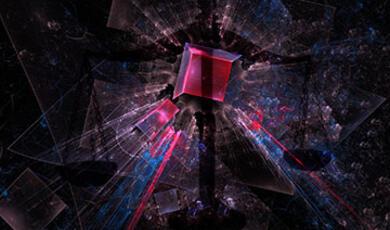Terror and the Rule of Law
Share
- Details
- Text
- Audio
- Downloads
- Extra Reading
The Revolutionary tribunals in 1790s Paris; the Moscow show trials of the late 1930s; and the prosecution of conspirators in the assassination attempt on Hitler by the so-called “People’s Court”, are well-known examples of the way the law and its processes can be misused in totalitarian societies. These were trials designed to terrorize the population and solidify the power of the state.
This lecture will explore how the courts can be the vehicles of despotic power.
Download Text
It is March 1938. The scene is the Hall of Columns in Moscow. Before the 1917 Revolution it was the venue for extravagant balls where the Russian nobility danced until dawn. Now it is fitted with drab wooden benches and is hosting a criminal prosecution: the last of the three so-called Moscow show trials. There are 21 defendants in the makeshift dock – many of them Bolsheviks who were instrumental in the events of 20 years earlier and the creation of the Soviet state.
They are now accused of the most monstrous crimes. Plotting the murder of Stalin and Lenin; spying for Nazi Germany; conspiring to wreck the Soviet economy; conniving with foreign powers to attack their own country. The most famous of the defendants is Nikolai Bukharin, one of the principal theorists of Bolshevism, a man for many years universally liked and admired before it became impolitic to admire or like him, who has devoted his entire life to the cause of Revolution and the Party.
We hear the prosecutor commencing his opening speech. Andrey Vyshinsky is now an old hand: he prosecuted in the first of the Moscow show trials in August 1936, the so-called Zinoviev-Kamenev trial, and also at the second a year later, in 1937. He has perfected his denunciations into language of elaborate fury:
“Our whole country, from young to old, is awaiting and demanding one thing. Our people are demanding one thing: the traitors and spies who are selling our country to the enemy must be shot like dirty dogs. Our people are demanding one thing: crush the accursed reptile...Over the road that has been cleared of the last scum and filth of the past, we, our people, with our beloved leader and teacher, the great Stalin, at our head, will march as before onwards and onwards, toward Communism.”
Whenever the prosecutor pauses the large audience, made up of specially selected members of the NKVD, the security police, roars its approval and applauds. Like school children out on a Sunday treat, as one observer described them.
There are a few defence advocates present in court. But they are representing only three of the 21 defendants, Kremlin doctors accused of poisoning the great Russian writer Maxim Gorky. The other defendants are offered legal representation but firmly refuse it. One of them speaks: “I do not need counsel. I do not intend to defend myself. I am here to bear full responsibility for my crimes.”
Not that having a defence lawyer would do you much good as a defendant in this trial. When these lawyers eventually come to speak, they appear to be almost part of the prosecution team. Advocate Braude stands up. He is also an old hand at the show-trials. Let me give you an example of his style of defending:
“Comrade Judges, I am not going to conceal from you the exceptionally difficult and immeasurably hard position a counsel for the defence finds himself in in this case. After all a counsel for the defence, Comrade Judges, is first and foremost a son of his motherland, he is also a citizen of the great Soviet Union and the feelings of great indignation, wrath, horror which all our country, both young and old, are now seized with , the feeling which the Prosecutor expressed so clearly in his speech, these feelings are inevitably shared by the counsel for the defence as well….We see, Comrade Judges, that for the technical fulfilment of their wrecking designs these conspirators have only their insignificant forces and foreign intelligence services on which to count.”
20 out of the 21 defendants plead guilty. Almost all of them fall over themselves not simply to formally admit their culpability, but to participate in an of orgy of self-abasement, each seeking to outdo the other in self and mutual denunciation:
“The monstrousness of my crimes is immeasurable, especially in the new age of the struggle of the USSR. May this trial be the last severe lesson and may the great might of the USSR become clear to all...Everybody perceives the wise leadership of the country that is ensured by Stalin. It is in the consciousness of this that I await the verdict. What matters is not the personal feelings of a repentant enemy, but the flourishing progress of the USSR.”
If you trace the statements of self-inculpation of the dozens of defendants across all the trials, they all have a similar tone. Here are some snippets:
“I don’t consider it possible to plead for clemency…Only one conclusion can be drawn – we represent a most brutal gang of criminals who are nothing more nor less than a detachment of international Fascism…I depart as a traitor to my Party, as a traitor who should be shot.”
The accused’s’ confessions are not only fulsome, but extraordinarily detailed. Vyshinsky questions them at length to extract a full narrative of their supposed crimes. For hour upon hour the defendants provide answers: Illicit meetings with Trotsky to conspire to overthrow the state. Murder plots. Poisonings. Wrecking operations.
One of the 21 defendants is Nikolay Krestinsky. He had been a member of the Politburo and General Secretary of the Communist Party. He now does something shocking. When asked whether he pleads guilty he replies:
“I plead not guilty. I am not a Troskyite. I was never a member of the bloc of Rights and Troskyites, of which existence I was not aware. Nor have I committed any of the crimes with which I am personally charged. In particular I plead not guilty to the charge of having any connection with the German Intelligence Service.”[1]
This is not meant to happen. The prosecutor looks thunder struck. When Krestinsky’s signed confession of guilt is put to him he answers with devastating directness: “I was forced to make that statement.” As the questions continue Krestinsky, looking, according to one spectator, like a small, bedraggled sparrow, stands firm. The prosecutor swiftly moves on to less recalcitrant defendants. The next day the court reconvenes. Vyshynsky seems to have a renewed air of confidence. He returns to his questioning of Krestinksy.
“Q. Do you persist in your refusal to confirm your previous confirmation?
No. I confirm everything.
Q. What then was the meaning of the statement you made yesterday.
Yesterday, influenced by a feeling of false shame, and by the atmosphere of the court, and by my state of health, I could not bring myself to tell the truth, and admit my guilt before the world. Mechanically I declared myself innocent. I now beg the court to take note of the statement which I now make to the effect that I admit my guilt, completely and unreservedly, under all the charges brought against me, and that I accept full responsibility for my criminal and treacherous behaviour.”
Nobody seems surprised by this remarkable volte-face. The chairman of the judges turns to Krestinsky: “You may sit down”. The defendant slides back onto this seat, with a look almost of relief. The English diplomat Fitzroy McLean noted sardonically in his account of the trial: “The words were reeled off like a well-learnt lesson. The night had not been wasted. The situation was saved.”
What we must remember is that almost everything the defendants have said throughout the several days of this trial is untrue. They know it. The prosecutor knows it. The judges know it. Everyone is acting a part in a grand theatrical production. The outcome and sentence are pre-determined: the judges have already pre-arranged that with the prosecutor and Stalin. All the lines have already been written. Only occasionally the defendants step out of their character. But, as we have seen with the miserable Krestinsky, a little gentle overnight persuasion can bring them back into line.
This is clearly no ordinary trial. In fact, it is a grotesque parody of a trial, a display carefully orchestrated after months of planning. Everyone is playing their part, and everybody is motivated by one predominant motive: somehow to stay alive.
We are in the middle of Stalin’s Great Terror and this trial is terror in action. Let me be clear: everyone in this court is worried. Some are terrified, others anxious. The prosecutor and the judges know that if they do not deliver a seamless production to the world, ending in the accused fully confessing their crimes and willingly embracing their fate, then they will be deemed to have failed. One of the panel of judges who had condemned Marshal Tukhachevksy to death the year before had been heard to say “Tomorrow I'll be put in the same place.” And he was right: most of the tribunal were subsequently shot.
One of the defendants in this trial, Genrikh Yagoda, had been until a year earlier the People’s Commissar for Internal Affairs – that is the head of the security police. Yagoda had orchestrated the first show trial in 1936 – in one sense a great triumph for Stalin – but that was not enough to save him: he is now accused of treason. Hence the consternation of Vyshkinksy when the accused Krestinsky suddenly decided to depart from the script. Even the NKVD members who make up the audience are worried that insufficient displays of approval for the prosecutor’s rhetoric might be noted down and used against them.
As for the accused, over the years historians and psychologists have been fascinated by the thought processes that underlay their seemingly enthusiastic participation in their own destruction. Day after day in answers to questions put to them by the court and the prosecutor the defendants piled lie upon lie in their own incrimination and did so with gusto – as parodied by this contemporary cartoon. It seems likely that one of the principal motivations was the promise that the more they played along with the fictional production, and acted their part in it, the more likely that Stalin would save them from the gallows.
And it was not only their own lives which were at stake. Each of the defendants had wives and children. Although it is now impossible to know precisely what accommodations were arrived at it is thought that each was warned that failure to co-operate would lead to the murder of family members.
This was no empty threat, albeit even if you complied with your side Stalin rarely abided by his side of the bargain. Lev Kamenev was a principal defendant in the first of the show trials in 1936. Stalin had personally promised him that he would be spared if he confessed his supposed crimes. On the very night of his conviction, having played his part to a tee, he was nonetheless shot. In the ensuing years both of his sons and his wife were likewise shot. The murder of relatives of purge victims was practiced on a mass scale. Perhaps Bukharin and his co-defendants at the 1938 trial were pretty pessimistic about their chances of survival. But possibly they latched onto a small spark of hope. They know that they will be found guilty for crimes they did not commit. But if they assist in the process of hastening their condemnation perhaps, they might earn a reprieve, at least for their family members.
And there was something else at work here. These men knew that they were the victims of a monstrous injustice. Yet it seems that devotion to the Revolution led many of them to the conclusion that if they were probably going to die anyway better to give their lives to the Revolution. These men had truly rooted out individualism from their psyches. Somehow by confessing to crimes they had not committed they were serving the State. It is an astonishing fact that many of them went to the gallows proclaiming their devotion to, even love for, Stalin, the very man who had brought about their judicial murder. We find Bukharin writing to Stalin from prison, professing his “boundless love” for the dictator and congratulating him on the “great and bold political idea” of using a purge to consolidate his regime. But he writes that he is troubled nonetheless by a “agonizing paradox” – that he was innocent. It was not a paradox that gave Stalin any second thoughts. He did not reply to his former friend.[2]
The Moscow show trials of 1936 to 1938 were both monstrous and fascinating. Stalin certainly had no need of a judicial process and a finding of guilt in order to provide the platform for the liquidation of his perceived enemies. After all, the vast bulk of the victims of the Great Terror were simply shot without any form of legal process. Stalin had wider purposes in organizing these trials than the simple eradication of supposed opponents. They were held in public and attended by foreign journalists and diplomats. They continued over many days and were even filmed. You can listen to, and shudder at, Vyshinsky’s tirades on YouTube. The proceedings were covered around the world.
In one sense you might think that holding a public trial carried grave risks. After all what if the defendants seized the opportunity to turn the tables on the prosecution and publicly denounce it for what it was - pure fantasy? What if they detailed the torture they had endured, to extract their confessions and the gruesome threats levelled against them? What if the observers, both domestic and foreign, saw through the fictionality of it all?
Reading the transcripts of the trials now, and of course bearing in mind all we know of Stalin’s atrocities, it is easy to stand astonished that anyone was taken in by it all. Some of the charges were just absurd. For instance, it was said against some of the defendants that they had engaged in wrecking operations: i.e. acts of deliberate sabotage against the State. One of the defendants was charged with having infiltrated nails and powdered glass into butter supplies; another with the destruction of 50 truckloads of eggs.
Yet the trials were stage-managed with consummate skill. Vyshkinsky’s displays of righteous indignation seemed to be borne of genuine rather than confected outrage. The judges maintained the right degree of dignity. The defendants had rehearsed their roles over many months to ensure that they brought a sufficient degree of verisimilitude to their new roles as murderers and traitors. Dates and places of meetings between conspirators were unfurled. Secret communications with Trotsky described with geographical precision. One defendant told of how he had been recruited at a particular restaurant in London’s Oxford Street in 1926. The organizers of this trial realized that proof – or rather the appearance of proof - consists not in generalities but in minutiae.
Of course, there were those around the world who were scornful of such nonsense. But many were not. Here is the United States Ambassador to the USSR, writing three years later about another of the trials, this time of generals in the Red Army:
“In view of the character of the accused, their long terms of service, their recognized distinction in their profession, their long-continued loyalty to the Communist cause, it is scarcely credible that their brother officers ... should have acquiesced in their execution, unless they were convinced that these men had been guilty of some offense. It is generally accepted by members of the Diplomatic Corps that the accused must have been guilty of an offense which in the Soviet Union would merit the death penalty.”[3]
And here is Denis Pritt, an English barrister and far-left MP, and it is fair to say sympathetically disposed towards the USSR, who attended the first so-called Zinoviev/Kamenev show trial:
“We can feel confident that when the smoke has rolled away from the battlefield of controversy it will be realised that the charges were true, the confessions correct, and the prosecution fairly conducted; we shall know that the only regrettable thing was and is that Zinoviev and his associates…should have sunk so low as to conspire to murder the heads of state.”[4]
Trials as fictional productions are certainly not an invention of the Soviet regime. Four weeks after Hitler came to power in 1933 the Reichstag, the German parliament building, burnt down. In the ensuing trial the state attempted to prove the existence of an in fact non-existent communist conspiracy to foment a revolution. The trial was part of the Nazi justification for seizing total control of the state apparatus and abolishing its democratic foundations. No doubt Stalin studied it carefully and noted that the error the Nazis had made was not to ensure that the defendants, a number of whom were in fact acquitted, had been properly schooled in their lines. As we will see the influences between the two states in their use of the law were mutual.
I think Stalin had multiple purposes for the Moscow trials. At the most brute level, the fate of the defendants, in almost all cases instant execution, no doubt cowed anyone contemplating any form of dissent into silent submission.
The trials were also exercises in calculated humiliation. The sight of these wretched men being ground into the dust must have sapped the morale of even the hardiest oppositionist. And it was made sure that the defendants, previously men of the highest rank in the Soviet Union, came before the court looking broken and crushed. Here is the former chairman of the Communist International, Grigory Zinoviev in his heyday, side by side with his friend Stalin. And here he is after his arrest and just before his trial. The pathetic sight of the conspirators in the make-shift dock seemed only to enhance the might of the Soviet state and the aura of invincibility which Stalin wished to cultivate.
But there were other messages being communicated by the Moscow trials. Stalin wanted to project to the Russian population the proposition that there was a vast conspiracy, orchestrated by the turncoat Trotsky, against the state and only he, the great Stalin, could withstand its depredations. The conspiracy so outlined provided the wider justification for the purge that took place in the main in the extra-judicial arena. What better way to create a fixed narrative that the state was in danger and exceptional measures were required?
Stalin also need scapegoats for the appalling mismanagement of the Russian economy, and the terrible suffering of the Russian people, that had occurred under his rule. Why, millions of people had no doubt asked, are we hungry? Why is there nothing to buy in the shops? Why does the butter taste awful? Now, through the formality of the trial, they had an answer. It was the fault not of the government, but of the shadowy conspirators, intent on debilitating the state.
For all their modernity, the Moscow trials drew on the past. Surely, we can trace some part of their ancestry back to the witch trials of the Middle Ages. When crops failed and hardship ensued the way the community rationalized economic disaster was to locate some outsider to blame. It was the fault of somebody extraneous to the system; somebody who could be identified and punished. Better to think that calamity had a human face than was somehow endemic or part of the system. And Stalin and his henchmen also learn the lessons from the Inquisition that the best way of achieving irrefutable proof was by having the defendants asserting their own guilt.
One of the people who attended the Moscow trial and was impressed by Vyshinsky’s methods was a German jurist and committed Nazi called Roland Freisler. By 1944 Freisler had been for two years the president of the so-called Volksgerichtshof, the People’s Court. This court was created by order of Hitler in 1934 to exercise special jurisdiction over what might loosely be described as political offences. Not only active opposition to the regime, but any behaviours which could be said to be contrary to the war effort, came within Freisler’s remit. It is said that during his three-year tenure as President, until he was killed by an allied bombing raid on his own courthouse, his court pronounced more than 5,000 death sentences. These could be for as trivial an offense as expressing defeatism or scepticism about the outcome of the war. In 1943 Freisler sentenced to death a doctor who had said to his patient, the wife of a front-line soldier, that in the event of Germany’s defeat her husband would likely be killed.
Freisler’s moment of greatest infamy came after the July 1944 plot to assassinate Hitler. As you may recall the bomb placed by Klaus Von Stauffenberg in Hitler’s bunker failed to kill him and within hours many of the conspirators had been rounded up. There followed dozens of trials presided over by Freisler. The courtroom in which they were conducted was draped with swastika flags; a huge bust of Hitler presided over the proceedings. Here is another image.
Just as in the Moscow trials the trials of the July plotters were attended by large audiences of army officers and party functionaries, together with dozens of journalists. Again, like the Moscow trials the hearings were filmed and so we have been given an extraordinary insight into a Nazi court exercising its functions during the Terror that reigned in the autumn months of 1944.
Although a prosecutor had been technically appointed to present the state’s case, he appears to have been entirely redundant during these trials. Freisler, as president of the Court, arrogates to himself the roles of advocate, judge and jury. There is not even a pretence at due process. In Moscow the judges were ostensibly neutral, and the defendants were permitted to make their final speeches uninterrupted – on the understanding of course that those speeches would be an exercise in self-damnation. In the People’s Court in Berlin in late 1944 the semblance of legality has been entirely cast off.
We hear savage denunciations of each of the accused by a man supposedly sitting as a judge. He takes the Vyshinksy form of harangue to a new level of invective. Provided with intentionally ill-fitting civilian clothes, each defendant is led up to a table in front of the bench and holds onto the back of a chair before b. Perhaps the most unsettling of these scenes is that of former Field Marshal Witzleben, one of the generals who had achieved the Fall of France 4 years earlier. Stripped of his uniform, the trousers he has been given in detention are too big for him. With no belt to keep them up, one hand tries to hold them while the other shakes uncontrollably. His false teeth have been removed. Again, let us compare the Field Marshal in his prime with his appearance before the People’s Court. For several minutes he is shouted at by Freisler. Mumbled interjections by him are cut short. It was reported that the film crews had to ask Freisler to lower his voice because it was distorting the sound quality of the film.
Another of the defendants, General Steiff, is led forward. He is asked why he acted as he did. He replies, “For Germany”. Freisler responds:
“For Germany! It is reprehensible that you are not ashamed to be still saying that, because I already told you what Germany is. Our Fuhrer is Germany and we are his followers...You cannot speak for Germany.”
One of the most haunting aspects of these films is the knowledge we have, which surely the defendants shared, that they would be executed that very same day. When we see them being led, handcuffed, out of court, they are being taken away to be hanged
The format of these hearings is of course completely removed from what we would understand as the normal trial process. No evidence is called. Any attempts by the defendants to explain their motivations are swiftly suppressed. Lawyers while present in the courtroom have no role to play. The findings of guilt and pronouncement of sentence are a pure formality.
The purposes of the 1944 trials had striking similarities with those of the Moscow trials. To humiliate the defendants. To try to demonstrate the overarching strength of the regime: a message sorely needed as the military reverses built up in late 1944 and early 1945. To dissuade other potential plotters from seeking to put into action any ideas of a coup against the Reich. Finally, to act as the vanguard for the thousands of extra-judicial killings that followed against anyone even vaguely associated with the plotters. The footage of these trials was apparently shown in cinemas and on the front-line to troops to further these aims. But the sheer nastiness of Freisler’s conduct – its total departure from the behaviour one would expect from a judge - was apparently so shocking that the films were in time withdrawn. Even the Germany of late 1944 retained some residual respect for what was meant by the rule of law.
Just as Stalin’s and Hitler’s Terrors utilized the courts as part of the armoury of the state’s repression, so in an earlier Terror, the original Terror, the court process had served its purpose. In 1793, at a moment of crisis in the Revolution, the French Revolutionary Tribunal was instituted. The War against Austria and Prussia was going badly; hyperinflation was rampant; food shortages were biting. Fearful of internal dissent and agitation the National Convention infamously announced that “terror is the order of the day.” The Tribunal was expected to be the principal deliverer of that terror. It heard cases of treason; but that was not a narrow jurisdiction. Treason was now defined very widely indeed. What the Tribunal was expected to deliver were guilty verdicts in industrial quantities and in order to fulfil that expectation special measures were required. The law of 22 Prairial Year II sets the template for future totalitarian courts. It is notable for its dreadful simplicity.
“The Revolutionary Tribunal is instituted to punish the enemies of the people.
The enemies of the people are those who seek to destroy public liberty, either by force or by cunning.
The following are deemed enemies of the people:..”
And there then follows a long list of extraordinary length. I extract some in the Slide:
Those who have sought to impede the provisioning of Paris, or to create scarcity within the Republic;...
Those who have deceived the people or the representatives of the people, in order to lead them into undertakings contrary to the interests of liberty…
Those who have sought to inspire discouragement, in order to favor the enterprises of the tyrants leagued against the Republic:
Those who have disseminated false news in order to divide or disturb the people;
Those who have sought to mislead opinion and to prevent the instruction of the people.
Revolutionary sentencing policy at least had the advantage of brevity.
“The penalty provided for all offenses under the jurisdiction of the Revolutionary Tribunal is death.”
Under the new law defence counsel were prohibited. The defendant could not call evidence in his or her defence. The mere fact of a denunciation carried evidential weight. The burden of proof was effectively reversed. There were only two available verdicts: acquittal or death. The Tribunal got to work with alacrity; in two months after the law was instituted 332 people had been condemned to death. Here we see it at work. And we see to the left the public accuser, Antoine Fouquier-Tinville, whose fanaticism in discharging his duties, found its match in the later work of Vyshinsky and Freisler.
150 years separate the French Revolutionary Tribunal and the Courts of the Soviet Union and Nazi Germany. But we can trace in the law of 22 Prairial, and the manner of its administration, the beginnings of a new conception of justice, or rather injustice. The criminalization of any form of behaviour which challenges the interests of the state, the subordination of all individual rights to the exigencies of the state. The progenitor of the law, Robespierre, justified it in this way:
“If the basis of popular government in peacetime is virtue, the basis of popular government during a revolution is both virtue and terror; virtue, without which terror is baneful; terror, without which virtue is powerless. Terror is nothing more than speedy, severe and inflexible justice; it is thus an emanation of virtue; it is less a principle in itself, than a consequence of the general principle of democracy, applied to the most pressing needs of the patrie.”
We can see the ideology of 22 Prarial at work in countless revolutionary tribunals established since 1792: in the Paris Commune in 1871; in Hungary during the short-lived Soviet Republic of 1919; in Cuba in 1959. And in each case, we also see a key attribute of all courts working in times of Terror: a tendency to extremity, not simply because of the laws they are typically administering, but because of the fear that actuates the lawyers who participate.
I need hardly say that the court processes I have described are as far removed from the principles that shape the concept of the rule of law, which I described in my first lecture, as it is possible to imagine. Every ingredient of what we would today think of as necessary to a fair trial is missing. The legal processes which led to the executions I have mentioned are ghastly parodies.
What I think these three examples from history show is how fragile the concept of justice is. It is interesting that across the world justice is embodied by the image of a blindfolded goddess, often holding scales, whose image stands above or before countless courthouses. There are literally dozens of sculptural iterations of Lady Justice in Europe, South and North America, Asia and Africa. She may derive from Classical mythology, but Justitia has spread far and wide. Here is a particular flamboyant one from Berne in Switzerland which dates back to 1543. We think of Justice as standing apart from and above the separate interests of the state and the individual who has supposedly broken its laws. We give Justice a human embodiment to make it somehow more tangible. Perhaps that is because we realise how brittle the ideals of the rule of law are.
Because at moments of national crisis, or perceived national crisis, the concept of justice can evaporate or at least change its colours fundamentally. Andrey Vyshinsky wrote in 1937 that “there are sometimes periods, moments in the life of a society and in our life in particular, when the laws prove obsolete and have to set aside.” What this means in practice is that there are times when the state, or rather those who are then in control of the state, decide that the set of principles we might describe as making up the rule of law is a hindrance to governing and a threat to the body politic. The interests of the state must be given absolute priority. When this happens the concept of justice becomes perverted so that it ceases to exist independently of the interests of the state. Robespierre referred to “the pressing needs of the patrie.” Were he here now he would no doubt assert that those pressing needs fully justified the abrogation of what even in the eighteenth century were understood as basic concepts of legal fairness. The Republic was in mortal danger. He would pooh-pooh as liberal cant the idea that the rule of law lays down principles that should be treated as immutable in whatever political circumstances. The Nazis took this notion one step further with the so-called Fuhrerprinzip: the principle that the Fuhrer’s word was above all written law.
State terror might be described as a calculated policy of political repression and violence intended to subdue political opposition. Of course, in its purest iteration state terror can dispense with courts altogether and simply engage in mass extra-judicial killing. Yet even at the most sanguinary moments across history we see that the state has preferred to maintain the illusion of some degree of legal formality. Even when the pronouncement of guilt is pre-determined, the state likes to have the imprimatur of a judicial verdict to provide the veneer of justification to what would otherwise be simple state murder. And sadly, history demonstrates that there are always lawyers willing to lend a hand to provide it that imprimatur. But there is something more. Regimes know that the courtroom is a privileged space, and that the words spoken in it can carry very far. Let me return to the man we started with, Stalin’s faithful prosecutor Andrey Vyshinsky. After the first of the trials in 1936 his biographer notes that the biting language of the prosecutor, laden with instantly memorable insults, found its way into everyday conversation and the currency of journalism. In the letters, newspapers and books of the period we find references to the “Dogs of the fascist bourgeoisie”, “despicable pygmies, “decayed dregs of society”. And Soviet poets were not immune. One poet, Alexei Surkov produced this masterpiece of lyricism, apparently an attempt to transform the prosecutor’s speech into verse:
“The spite of jackals and the hatred of hyenas
Led the traitors down the path of murder.
Poisoned are their black deed
With the pungent stench of putrid corpses…”
With those ringing words I will conclude.
© Professor Grant, 2022
[1] The Great Purge Trial (1965, Universal Press), p.36.
[2] See Sadakat Kadri, The Trial: A History from Socrates to O.J. Simpson (Harper Collins, 2005), p. 217.
[3] Mission to Moscow (1941).
[4] The Moscow Trial (1936), p.5
Part of:
This event was on Mon, 24 Jan 2022
Support Gresham
Gresham College has offered an outstanding education to the public free of charge for over 400 years. Today, Gresham College plays an important role in fostering a love of learning and a greater understanding of ourselves and the world around us. Your donation will help to widen our reach and to broaden our audience, allowing more people to benefit from a high-quality education from some of the brightest minds.


 Login
Login







